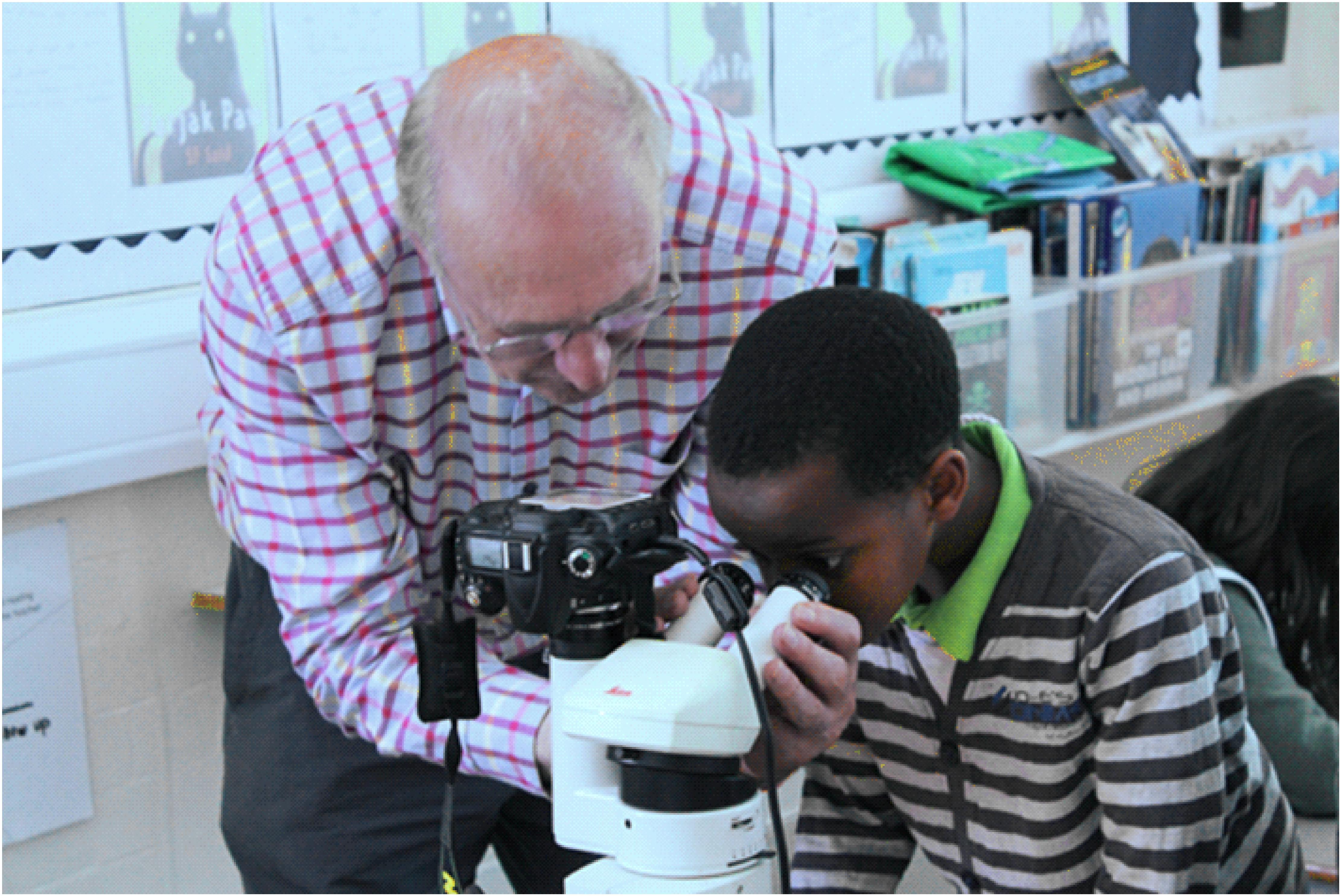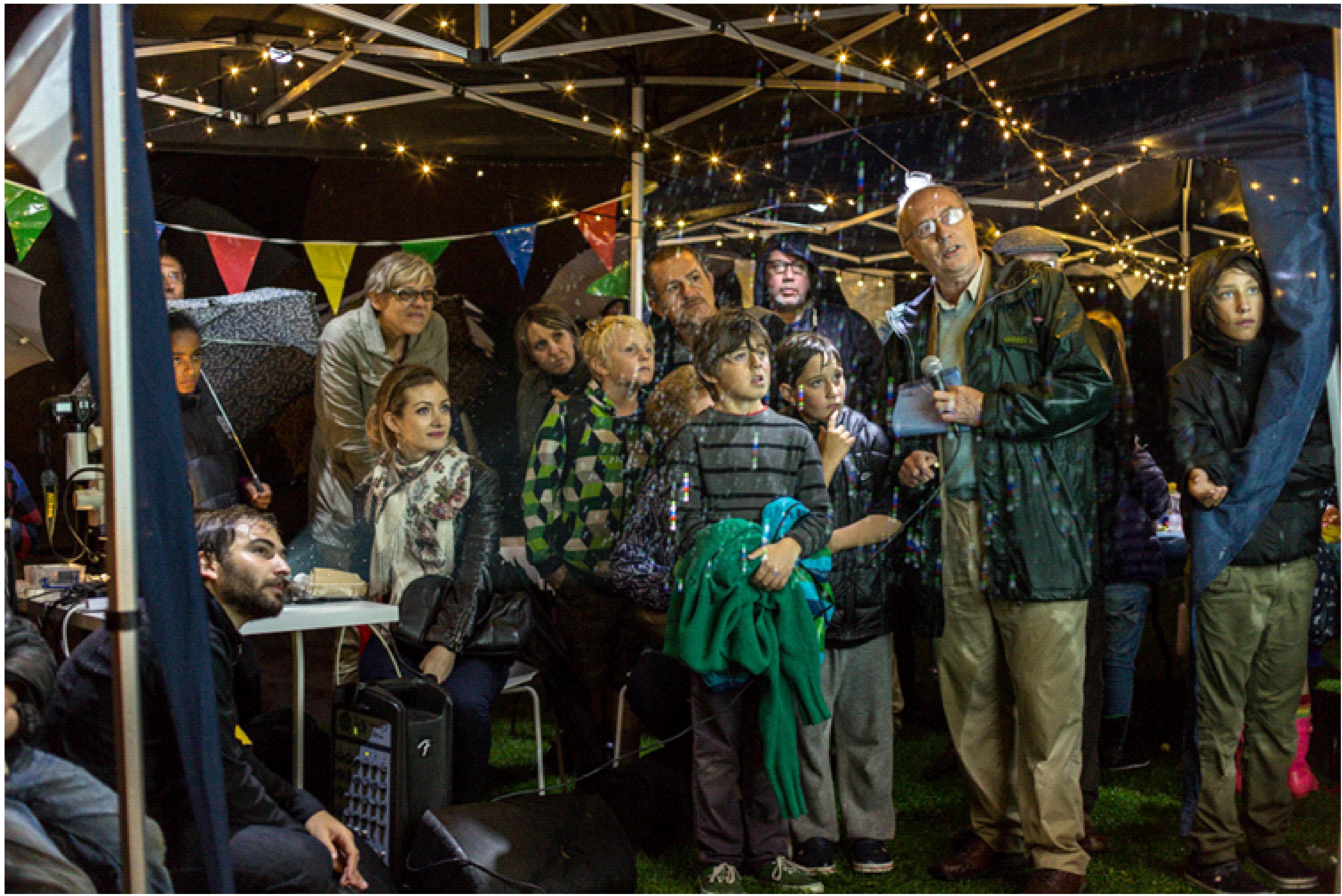Collaborations
- Emily Tracy and Lizzy Hobbs - Water Folk
- Professor Ian Meinertzhagen and Professor Stephen Shaw
- Professor Peter Bräunig
- Dr C.M. Elvin
- Professor Stephen Simpson
Water Folk

In 2013 I have collaborated with two artists from London, Emily Tracy and Lizzy Hobbs on an Arts Council funded project called Water Folk. The project involves two groups of senior citizens, Ray’s Geezers and the Sharp End, and a class of 9 year old children from Gayhurst Community school in Hackney, London.
The waterfolk project has explored the small animals in the waterways of East London. I have filmed the animals with a high speed camera, participated in collecting the animals with the groups, visited the children in their class rooms and showed them how we study the movements. The two artists have interwoven my high speed films with animations made by them and the Gayhurst children that has been shown to the public on the Floating Cinema. I have also given a presentation of my films to all the groups and a public lecture at the launch of our film.

- Photograph by Hydar Dewachi 2013.
I collaborate with four international groups on the following research projects
1. Professor Ian Meinertzhagen and Professor Stephen Shaw,
Department of Psychology and Neuroscience, Dalhousie University, Halifax, NS, Canada. We study the properties of the elastic protein resilin in contributing to an energy store for jumping and on the ultrastructure of jumping muscle.
Publications
Burrows, M., Meinertzhagen, I.A. and Bräunig, P. (2013) Slowly contracting muscles power the rapid jumping of planthopper insects (Hemiptera, Issidae). Cell Tissue Res. (in press).
Burrows, M., Borycz, J.A., Shaw, S.R., Elvin, C.M. and Meinertzhagen, I.A. (2012) Antibody labelling of resilin in energy stores for jumping in plant sucking bugs. PLoS One 6: e28456.
Burrows, M., Shaw, S.R. and Sutton, G.P. (2008) Resilin and cuticle form a composite structure for energy storage in jumping by froghopper insects. BMC Biology 6: 41.
2. Professor Peter Bräunig,
Institut fur Biologie II, RWTH Aachen University, Aachen, Germany. We study the neurobiology of the muscles and neurons involved in propelling the jumping of planthoppers and the actions and connections of insect neuromodulatory neurons.
Publications
Burrows, M., Meinertzhagen, I.A. and Bräunig, P. (2013) Slowly contracting muscles power the rapid jumping of planthopper insects (Hemiptera, Issidae). Cell Tissue Res. (in press).
Burrows, M. and Bräunig, P. (2010) The actions of neurons and leg muscles in jumping by planthopper insects (Hemiptera, Issidae). J. Comp. Neurol. 518: 1349-1369.
Bräunig, P. and Burrows, M. (2008) Neurons controlling jumping in froghopper insects. J. Comp. Neurol. 507: 1065-1075.
Bräunig, P and Burrows, M. Projection patterns of posterior dorsal unpaired median neurons of the locust subesophageal ganglion. J. Comp. Neurol. 478: 164-175.
Bräunig, P., Burrows, M. and Morris, O.T. Properties of descending dorsal unpaired median (DUM) neurons of the locust suboesophageal ganglion. Acta. Biologica Hungarica 55: 13-19.
3. Dr C.M. Elvin,
Division of Livestock Industries, Commonwealth Scientific and Industrial Research Organisation, St Lucia, Queensland, Australia
We collaborate on the distribution and properties of resilin.
Publications
Burrows, M., Borycz, J.A., Shaw, S.R., Elvin, C.M. and Meinertzhagen, I.A. (2012) Antibody labelling of resilin in energy stores for jumping in plant sucking bugs. PLoS One 6: e28456.
4. Professor Stephen Simpson,
School of Biological Science, University of Sydney, Sydney, NSW 2006, Australia.
We collaborate on the neuronal mechanisms of phase change in locusts
Publications
Anstey, M.L., Rogers, S.M., Ott, S.R, Burrows, M. and Simpson, S.J. (2009)Serotonin mediates behavioural gregarization underlying swarm formation in desert locusts. Science 323: 627-630.
Rogers, S. M., Matheson, T., Sasaki, K., Kendrick, K., Simpson, S.J. and Burrows, M. (2004) Substantial changes in central nervous system neurotransmitters and neuromodulators accompany phase change in the locust. J. Exp. Biol. 207: 3603-17.
